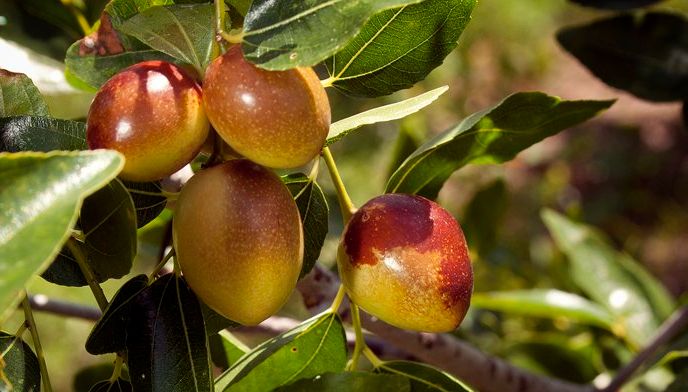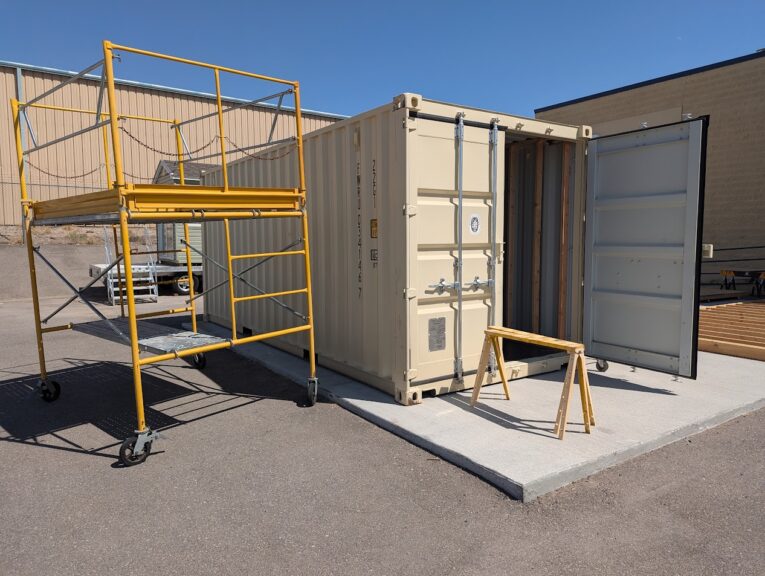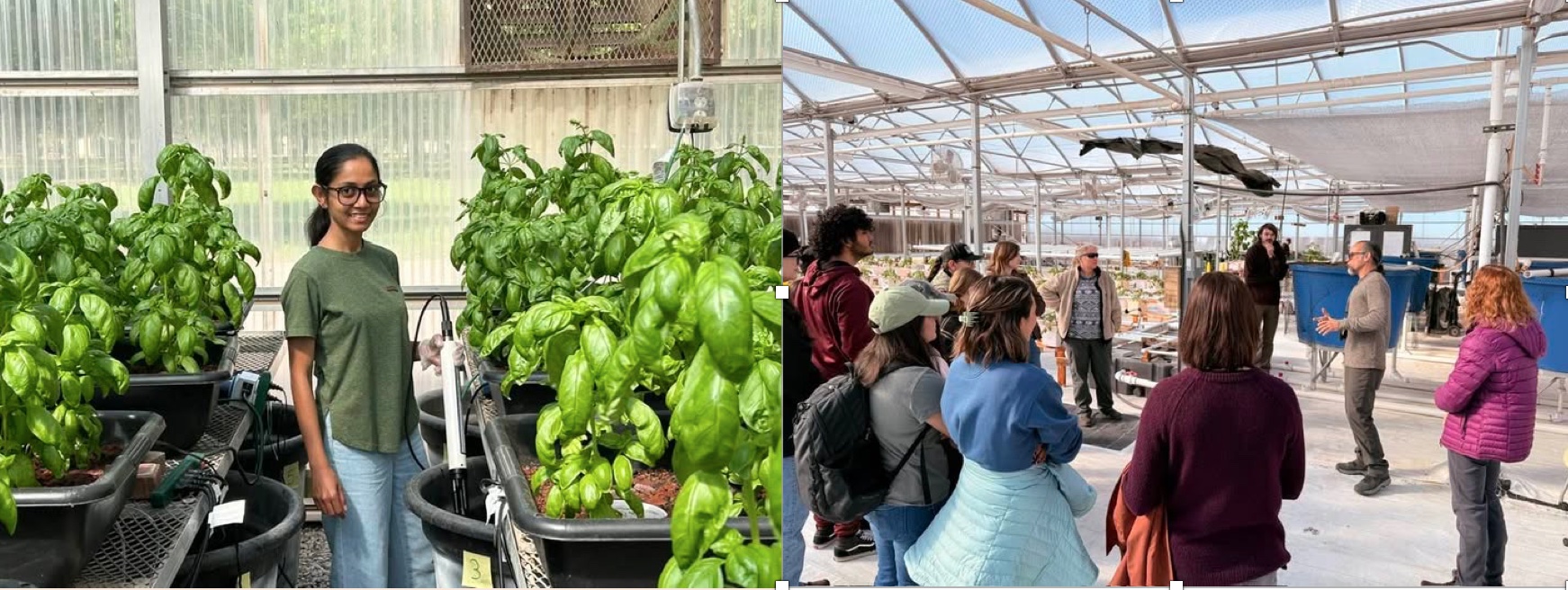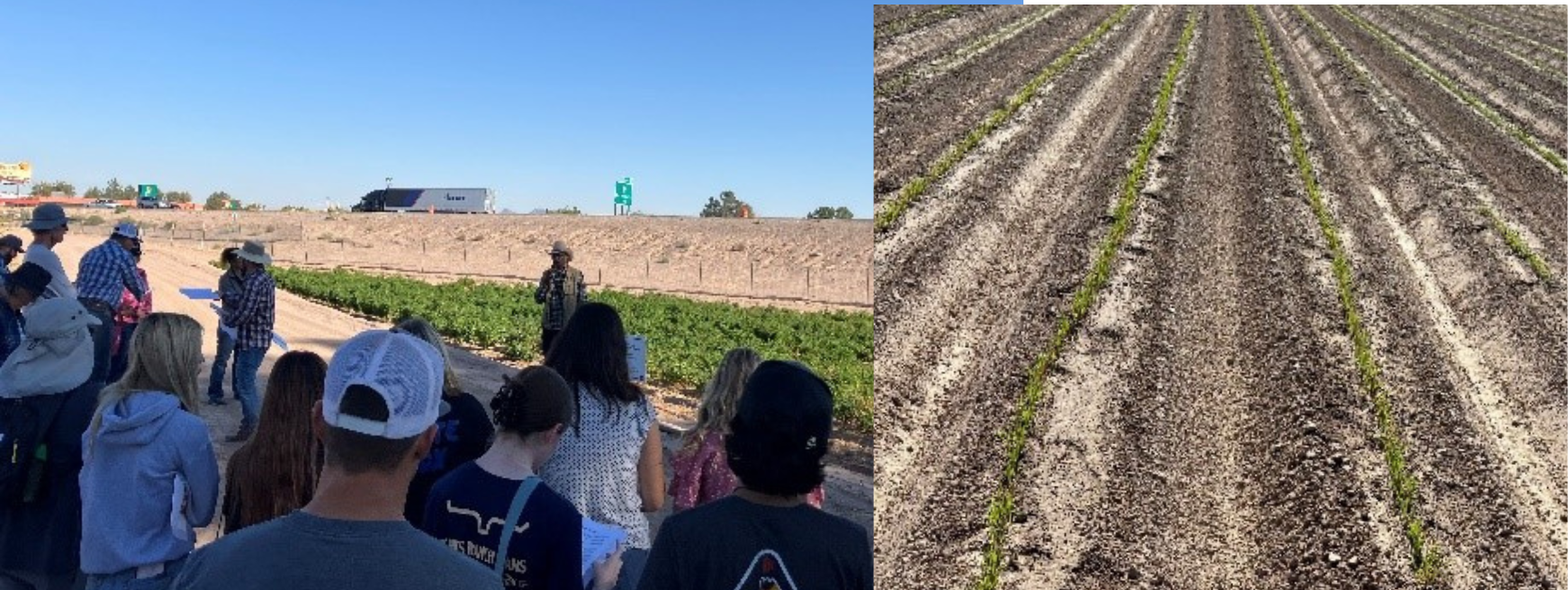Current Projects

Jujube Snacks That Support New Mexico Agriculture
Project:
Production of Jujube Snacks to Assist Farmers with an Avenue to Sell Their Crops and Enhance the Planting and Growth of Jujubes in New Mexico
Description:
Several types of jujube snacks are readily available for purchase from China. These snacks, although delicious and available for purchase, do not use New Mexican-grown jujubes. If New Mexican-grown jujubes were used to create similar Chinese snack foods for United States consumers to purchase, bearing the seal 'Grown in New Mexico' and 'Manufactured in New Mexico'. It would provide agricultural benefits for farmers and the State. Not only to copy Chinese snacks, but also to adapt New Mexican flavors to these snacks. Flavors could include green chili, roasted pecans, roasted pistachios, and roasted piñon nuts. Giving a southwestern twist to traditional Chinese jujube snacks.
Key Faculty:
-
Chef Pete Mitchell
Assessment of New Mexico’s Agricultural Supply Chain Operations
Description:
As investigators and researchers under NMSU CESFAS, we are conducting a research project to better understand the supply chain of value-added providers and service providers within the agricultural and food distribution sectors of New Mexico. Our target population includes a range of agriculture stakeholders such as manufacturers, processors, and broker grading facilities (value-adding providers), as well as warehousing services, aggregators/brokers, food distributors, and providers of labeling and packaging (service providers). To gather data, we will use a structured questionnaire designed to capture insights on operational models, challenges, and opportunities within these segments. Participants will be invited to take part in the research study through phone calls and Zoom meetings. Our approach is designed to be participatory and flexible, ensuring we capture both quantitative and qualitative data across a diverse and representative sample.
The scientific purpose of this research is to generate a deeper understanding of how value-adding and service providers contribute to the efficiency, resilience, and sustainability of regional agricultural supply chains as well as the supply chain of New Mexico. By systematically collecting and analyzing data from key stakeholders, we aim to identify structural patterns, operational challenges, and innovation opportunities within the food system infrastructure.
IRB Approved: Protocol Number: 2505186906
Key Faculty:
- Chaddy Robinson, PI
- Marisol Olivas (Research Assistant/graduate student)
- Kaeden Kirk (Research Assistant/graduate student)
CESFAS Internships with area Value-Added Stakeholders
Description:
CESFAS has five participating value-added companies to host CESFAS interns from May through August 2025. Currently two interns have been successfully hired and are submitting hours via the NMSU employee portal. In June two additional interns will come on board with Roadrunner Food Bank and Stampede Culinary Partners. In total four NMSU students will have internship experience and will provide a written report and presentation upon the completion of their internship. These experiences provide students with real work experience while allowing stakeholders the opportunity to assess the student’s skill set and work ethic. These workforce development opportunities will assist CESFAS with building the network of stakeholders while providing NMSU students with connections and employment.
Mid-summer evaluations will be distributed in the first week of July to both student interns and their supervisors.
Key Faculty:
- Chaddy Robinson
Expand the Reach of CESFAS by Translating Research to Outreach and Educational Messages
Description:
Translate CESFAS research and findings into outreach and educational materials through digital media, such as social media campaigns, games, animations, videos and virtual reality programs.
The primary task of this project is to communicate the work of existing CESFAS faculty and projects to the general public, share important findings and milestones, and establish CESFAS through a branding campaign as a Center of Excellence, defining outcomes in terms of benefit to New Mexicans. This will include work on the CESFAS Website, and possible videos and social media educational campaigns.
As requested, the team will also further the missions of additional projects. For example, based on partnership with the NM Chile Association, the team is compiling social media resources for an educational social media campaign with communicates the role of NM chile researchers and research in the popularity.
Key Faculty:
- Barbara Chamberlin
- Members of Innovative Media Research and Extension Department (Tomilee Turner on Video, Jeffrey Buras on Social Media, Adrian Aguirre on other Media)
External Partners:
Partners on other projects where relevant

New Mexico State University Container Farm Innovation Initiative
Description:
In collaboration with CESFAS, over 60 students from the NMSU College of Engineering and DACC are developing a prototype container farm to strengthen efforts reserach and commericlization efforts aimed at reduing food insecurity in rural and underserved communities throughout New Mexico. This innovative farm will incorporate movable hydroponic racks, advanced lighting systems, innovative HVAC solutions, enriched atmosphere, and a custom digital control system developed in partnership with Reliable Controls Corporation. Insights gained from its design, fabrication, and operation will inform new strategies to address food security challenges, foster a robust research pipeline for agricultural engineering at NMSU, and promote sustainable solutions for those most in need.
Key Faculty:
- Lead: Alexander Wilson
- Dr. Sergio Martinez-Monteagudo
Key Partner:
- Reliable Controls Inc,
- New Mexico Farm and Ranch Museum
- NMSU College of Engineering / Dona Ana Community College
Enhancing Microbial Recruitment and Persistence in Cover Crop Mixtures for Control of Soilborne Pathogens in Chile Pepper
Description:
Cover crops are important components of crop production with benefits to soil health in terms of increasing soil organic matter, fertility, and microbial activities. Various producers within the chile industry in New Mexico are exploring cover crops as a way of establishing microbial balance in soil to reduce the impact of soilborne pathogens. Discussions have centered on how to achieve this microbial balance by applying biologicals in cover crops several years before chile. A commonly adopted practice is the use of cover crop mixtures, with two or more plant species. The composition of the mixtures may affect the establishment and persistence of the beneficial microbes. Additionally, water availability may also affect microbial establishment and survival in cover crop mixtures. The objectives of this project are: 1) to determine the efficacy of cover crop mixtures on microbial recruitment; 2) to determine the efficacy of cover crop mixtures on microbial survival in soil following application of biologicals; and 3) to evaluate microbial survival and microbial biomass in cover crop mixtures under varying soil moisture levels.
Key Faculty:
- Lead: Soum Sanogo
- Phillip Lujan
External Partner:
- New Mexico Chile Association

Saffron: A High Value, Low Input Crop For Small Farms of Northern New Mexico
Description:
New Mexico has a rich tradition of using medicinal herbs, particularly among Native American and Hispanic communities. Small-scale farmers in northern New Mexico, facing water shortages exacerbated by climate change, are shifting from traditional crops to high-value alternatives. Saffron (Crocus sativus L.), the world's most expensive spice, appears to be well-adapted to the climate conditions of northern New Mexico and thus has potential for adoption by small scale farmers in the region. This program aims to introduce low-input, high-value crops, focusing on Saffron’s feasibility in northern New Mexico. Research conducted in 2023 and 2024 indicates that saffron can thrive in the region's climate, showing promising stigma production in the initial years. Saffron is well-suited for dry areas, particularly in USDA plant cold hardiness zones 5-9. Although local market potential is uncertain, the US saffron market was valued at $360 million in 2023, with significant imports suggesting strong demand.
Key Faculty:
- Lead: Saeid Zehtab Salmasi

Production of Natural Low Calorie Sweeteners
Description:
The COVID-19 lockdown triggered several negative food-related behaviors (e.g., food hoarding, emotional and mindless eating) that might have worsened the already alarming rates of obesity in the U.S.A. The work proposed here studies the synthesis of low-calorie natural sweeteners (e.g., D-tagatose, D-allulose, and D-Xylulose) from abundant byproduct streams. The increased consumption of sugar-sweetened foods during the current pandemic reveals a dire outlook of obesity and an increase in the already staggering healthcare costs. Producing low-calorie natural sweeteners from inexpensive and abundant carbohydrates will have social benefits beyond expanding the portfolio of reduced-calorie foods without compromising the craving for a sweet taste.
Key Faculty:

Aquaponics – Sustainable Urban Agriculture
Description:
In the arid Southwest, freshwater resources are dwindling at a dazzling rate. In order to continue growing crops, we need to consider more efficient ways for agriculture to reduce overconsumption of our water, protect natural aquatic ecosystems, and work towards a sustainable future. This project will simultaneously grow fish and crops in recirculating aquaponic systems. Fish excrete ammonia via their gills. Bacterial convert ammonia into nitrate, which is taken up by plants as an important nutrient. And the clean water is cycled back to the fish. The focus will be to increase the sustainability of fish feed by substituting fish meal in the feed with high-protein algae, vegetable, or insect meal.
Key Faculty:
- Lead: Wiebke Boeing
External Partners:

Jujube Cultivar, Dongzao, Cold Storage Study and Value-Added Product Development
Description:
Late frost is a critical issue challenging fruit production in central and northern New Mexico. In the past 15 years, we tested different alternative crops like berries and tree fruit species. Jujube (Ziziphus jujuba Mill.), a deciduous fruit species with nutritious fruit, leafed out 4-6 weeks later than most temperate fruit species. We had long-term cultivar trials at three locations in northern (Alcalde), central (Los Lunas), and southern (Leyendecker) New Mexico. Jujube has been proven well-adapted to soil and weather conditions in New Mexico especially in central and southern parts. To extend the fresh fruit supply period, we conducted a preliminary cold storage study of Dongzao in a walking cooler at Los Lunas in 2024. We noticed that fruit cracking/bruise and petiole-end opening were the starting points of mold. Due to the small fruit size, careful picking with fruit petioles would help, but it is labor intensive. Fungicide treatment would be another choice. We will test several treatments to extend the cold storage life of fresh jujube fruit in fall 2025.
So far, the majority of dry jujube fruit has been imported from China. As jujube acreage increases in the US, growers need more marketing outlets for their crops in addition to fresh fruit and dry fruit. Jujube processing and value-added product development in the US is almost blank. This will be a long-term project, and we start with some basic ones like jujube fresh cut, freeze-dried products, jujube and pecan/walnut combo (a pitted dry jujube fruit with a half walnut/pecan inside) in 2025.
Key Faculty:
Assessment and Mitigation of Mycotoxin Contamination in the New Mexico Red Chile and Paprika Production Chain
Description:
Red chile and paprika crops are used in the manufacture of a wide variety of food products that are popular among consumers. In the United States, New Mexico is the leading state in chile (non-bell pepper, Capsicum annuum) farming, with red chile and paprika accounting for about 12% of the state’s overall production. The majority of the red chile and paprika crop is dehydrated and crushed into flakes or powder for use in a wide variety of foodstuffs. Mycotoxin surveillance studies around the world have reported the presence of fungal secondary metabolites in these products, such as aflatoxins (AFs), ochratoxin A (OTA), and fumonisins (FUMs). The presence of mycotoxin-producing fungi in the field or during storage may result in reduced yield, quality, and safety of red chile/paprika-based products. The consumption of mycotoxin-contaminated foods/feeds may have detrimental consequences in the health of humans and animals.
To the best of our knowledge, there is no information available about critical points of mycotoxin contamination over different stages of the red chile/paprika production chain in New Mexico. In addition, no information about mycotoxin contamination in red chile/paprika pods and derived products commercialized in local New Mexico markets is available in the literature. The assessment of the prevalence of mycotoxins in the red chile/paprika production chain will enable the New Mexico Chile Industry to understand the status of the presence and extent of mycotoxin contamination and take countermeasures to mitigate potential food safety issues. In addition, this project will allow the identification of production stages at which mycotoxin contamination is found, enhance people’s awareness of mycotoxins, and guide the reduction of mycotoxin pollution and exposure levels.
Key Faculty:
- Lead PI: Luis Sabillón
- Co-PI: Soum Sanogo
External Partners:
- New Mexico Chile Association

Effects of Chile Pepper Waste on Lipid Oxidation and Color Stability in Beef Patties
Description:
Chile processing is one of the most important economic activities in New Mexico. Salsas and chile powder are the primary final products of this industry. During salsa production, residual seeds and pulp are discarded as waste. However, this waste contains natural compounds that can be exploited for biotechnological and commercial applications. With this study, we aim to evaluate the effects of chile pepper waste on lipid oxidation and color stability in beef patties.
Key Faculty:
- Lead: Francine Mezzomo Giotto
